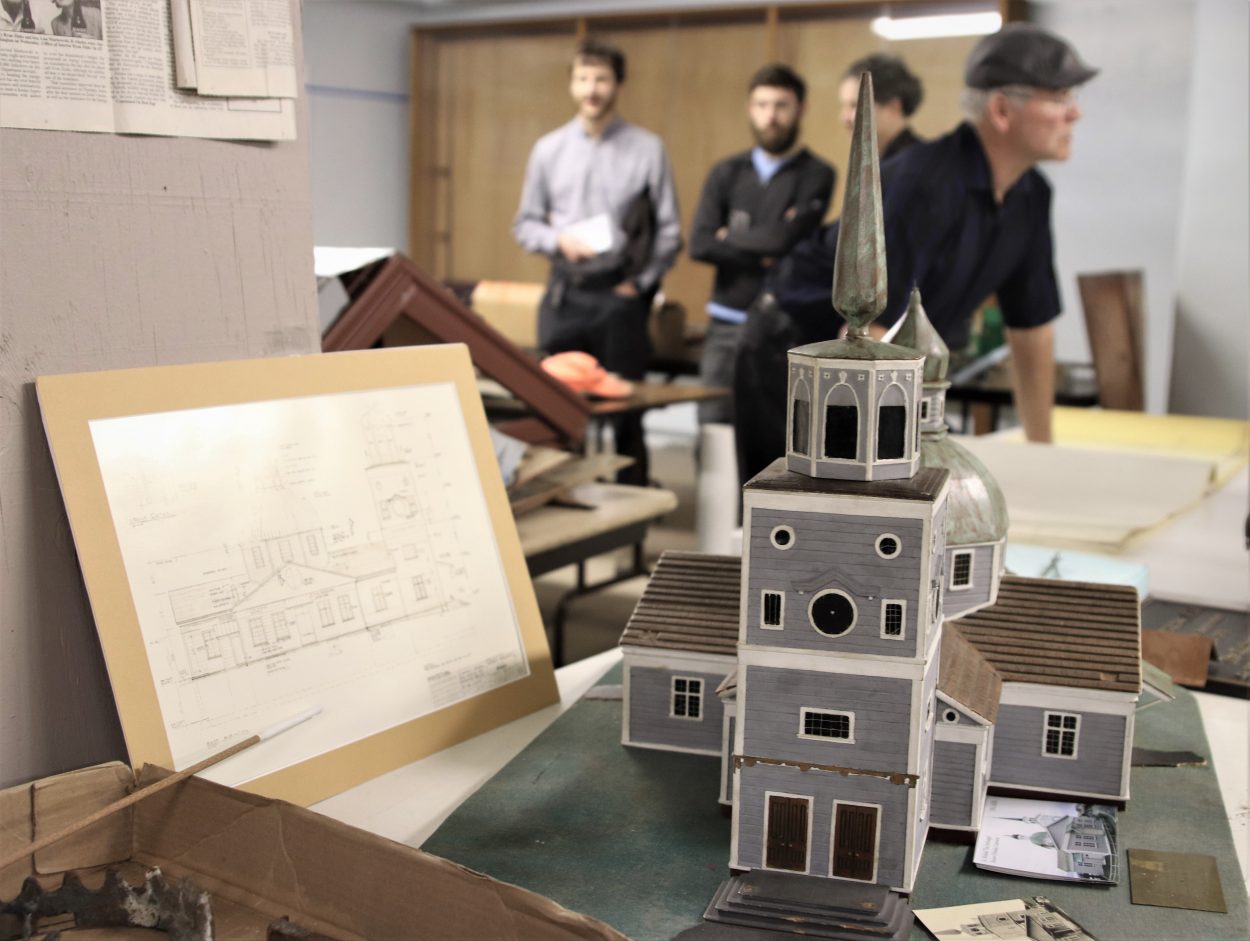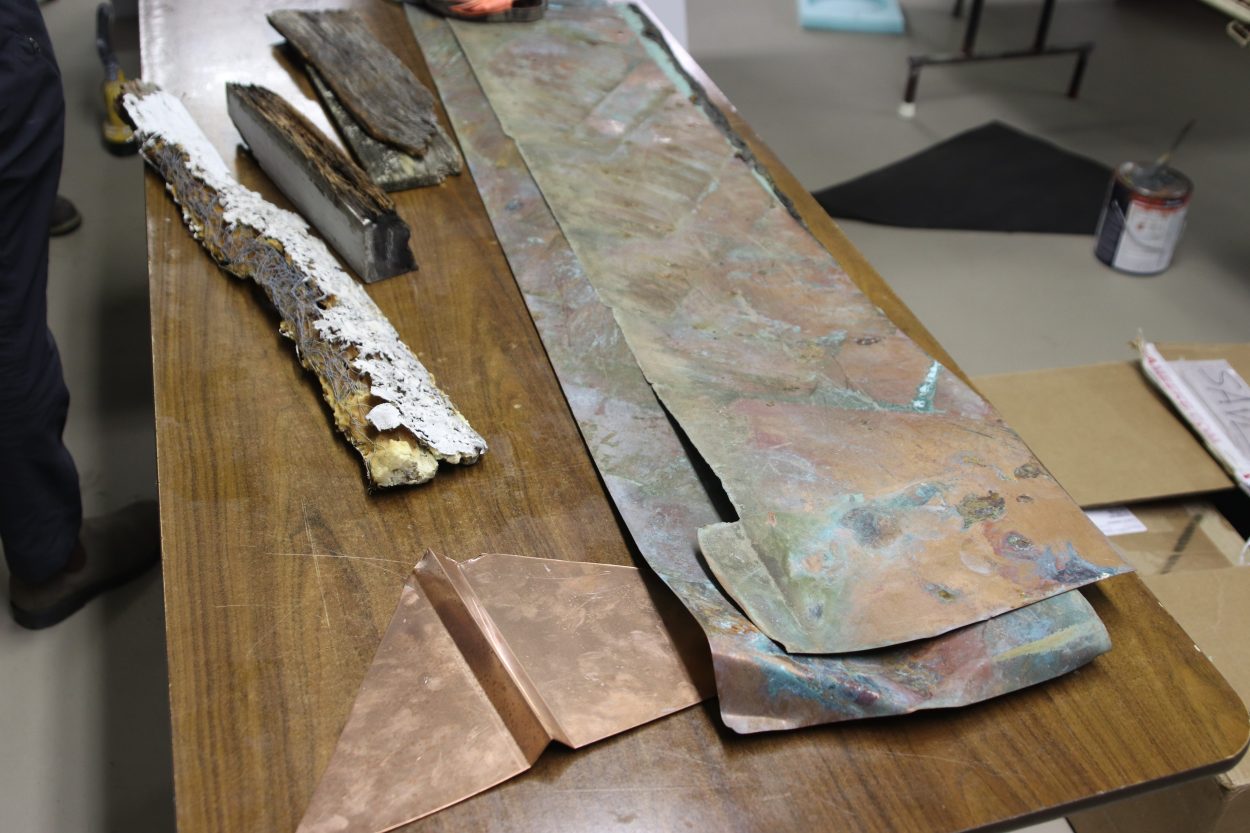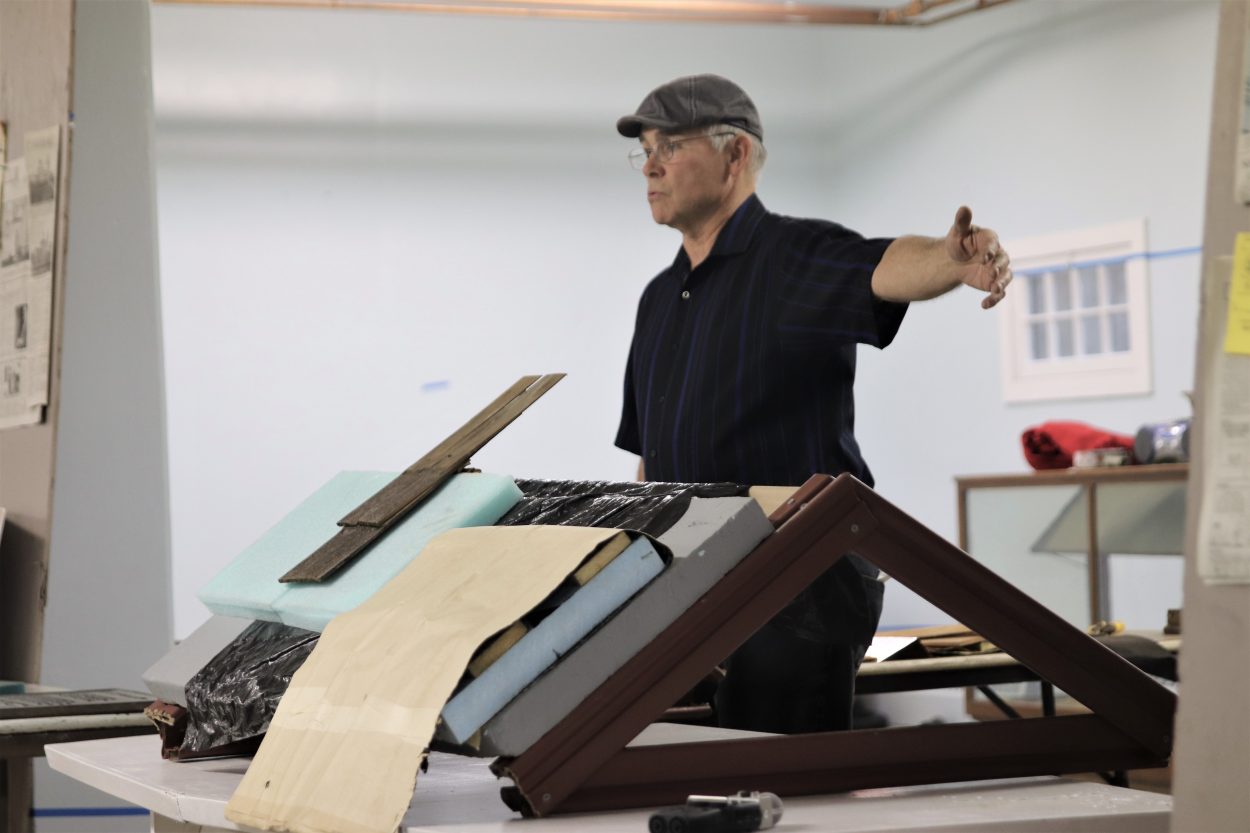
A 171-year old landmark in Sitka is getting a new coat of paint, and some tender loving care from a contractor who never guessed it would consume three years of his professional life.
KCAW’s Robert Woolsey recently attended a special meeting of the Sitka Chamber of Commerce, held in the basement of St. Michael’s Orthodox Cathedral.
That the new paint on St. Michael’s Cathedral in Sitka looks nice might be the understatement of the year — maybe of the last five decades.
The original cathedral was built by Russians in 1848 and burned to the ground on New Year’s Day in 1966, and subsequently was rebuilt as a replica with mid-20th Century materials. Painting contractor Pete Hagan began the job three years ago expecting to give the 50-year old structure a new coat of paint, but — as anyone who has worked on an old building knows — one thing led to another, and the project has morphed into a million-dollar restoration that is about 40-percent complete.
Hagan gave a presentation to the weekly luncheon meeting of the Sitka Chamber of Commerce, held in the basement of the cathedral. His speech was two-thirds historic preservation, one-third high school shop class.
“I found that I could take (tools clattering) and hold it with a set of vice grips,’ he said, “and ground down the bolt to about the size of a .32 caliber bullet.”
This is Hagan not just explaining — but demonstrating — how he invented his own tool for fastening the sheet copper together on the cathedral’s signature oinion dome. Wait, it gets better.
Hagan operates a cordless hammer drill.
“You put a nice little rounded dimple in here that crimps it down to where you can’t get it off,” he explained.
This is the method Hagan came up with, after a Seattle mechanical supplier quoted him $1,500 for an antique button punch, which presumably is what traditionally is used to install sheet copper roofing on old Russian buildings.

This was how the hour went for Hagan, describing one problem, solving it, only to find another in the roof, or the windows, or the floors. Despite being a relatively modern replica, St. Michael’s suffers from many old building problems, including the well-meaning but ill-considered repairs by his predecessors.
“This is my favorite,” he said. “This should go in the archives: This piece of rotten wood was replaced with some chicken wire and spray foam, and smoothed over with caulk. That’s pretty creative. Didn’t hold water out at all.”
And holding out water is the biggest problem at St. Michael’s, whether its Sitka’s drenching rains, or big high tides. Hagan has run a strip of masking tape along the wall of the basement, about eight feet up. It represents street level. That puts the basement of the cathedral just a few feet above sea level at high tide. Combine high tides and heavy rains, and the water has nowhere to drain but into the basement of St. Michael’s.
Hagan has caulked the concrete structure like a boat, using a cold chisel.
Hagan brings out a hammer and strikes it on cold chisel.
“And if that doesn’t get it, here’s another high-tech tool we use.”
And a gaff hook, standard equipment on any Alaskan fishing boat.
“To rake it out into small, half-inches, and to get it all out.”
Which he uses to create a gap to pour modern, hydraulic cement, that actually does keep the water out.

Hagan says this is the most interesting project he’s ever worked on in his career, and so far it’s paying dividends for the building. Roof leaks used to be collected in buckets; now that’s down to just a single flower vase. The basement, which used to look like any routinely flooded room, is now a mostly-dry, brightly lit space perfect for community functions like a Chamber of Commerce luncheon.
Several large donations and many small ones have contributed $400,000 toward the project. Hagan estimates that the work is about 40-45 percent done. Despite having put three years of his career into a building that started as a paint job, Hagan is not discouraged. “Think of Venice,” he told the chamber, “85-percent underwater. We are not doing badly at all.”






























